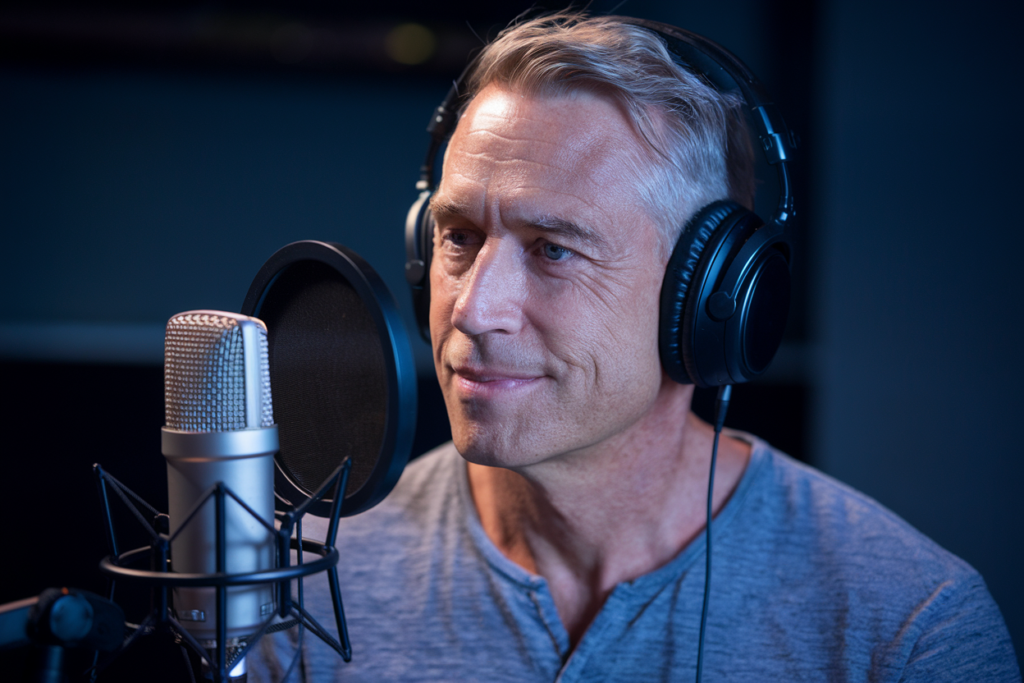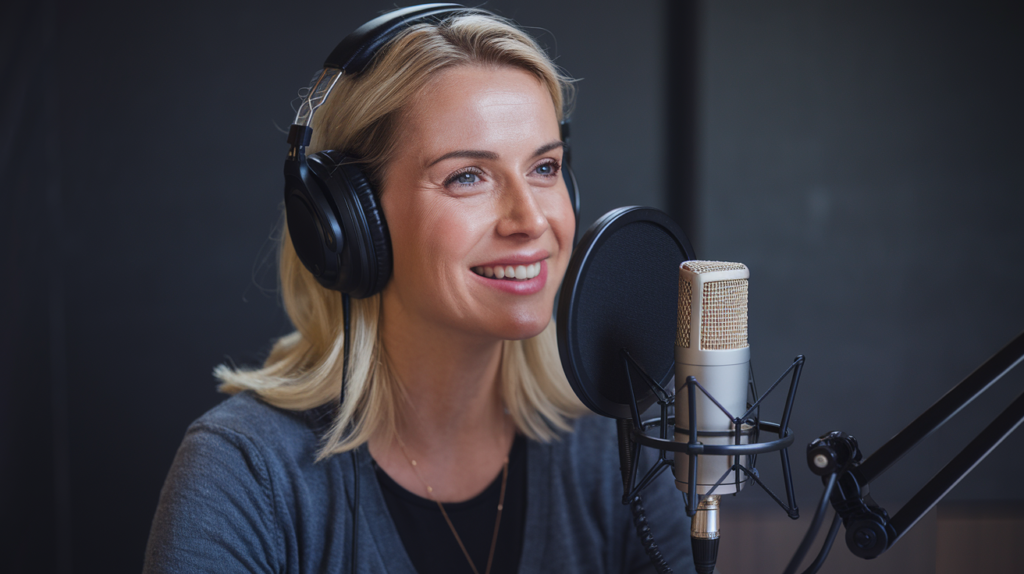Dubbing can transform a film or show, making it accessible and enjoyable for diverse audiences. When it comes to American English dubbing, achieving seamless lip sync is crucial. It not only enhances the viewing experience but also ensures that the original emotion and intent of the dialogue shine through.
Key Takeaways
- Seamless Lip Sync is Essential: Achieving precise coordination between audio and video enhances viewer experience and preserves original emotional intent.
- Focus on Timing and Syllable Count: Synchronize dialogue with character lip movements by matching timing, rhythm, and syllable counts for natural-sounding delivery.
- Select Skilled Voice Artists: Experienced voice actors bring depth to performances, adapting their style to resonate with American audiences while maintaining the original tone.
- Consider Cultural Context in Scripting: Adapt phrases that may not translate well to ensure relatable and natural dialogue without sacrificing meaning.
- Utilize Quality Equipment: Invest in high-quality microphones and audio software to enhance clarity, synchronization, and overall production value in dubbing projects.
- Address Common Dubbing Challenges: Be mindful of synchronization issues and audio quality concerns, using technology effectively to improve the final product.
Understanding Lip Sync American English Dubbing
Lip sync in American English dubbing involves precise coordination between audio and video elements to create a natural viewing experience. You must align the dialogue with the mouth movements of characters, ensuring that every word matches their lip motions effectively.
Focus on timing during voiceover sessions. Use playback tools to analyze the original performance, which helps maintain emotional authenticity while adapting to new language nuances. Pay attention to syllable count; matching the number of syllables in both languages aids in achieving better synchronization.
Select skilled voice artists who understand character nuances. Experienced voice actors bring depth and emotion, enhancing audience engagement through authentic performances. They can adapt their delivery style, ensuring it resonates with the target demographic while matching the original tone.
Consider cultural context when scripting for dubbing. Adapt phrases or idioms that may not translate well into American English. This adaptation keeps dialogue natural and relatable for viewers without sacrificing meaning or intent.
Utilize technology for clarity and precision in recordings. High-quality microphones capture subtle vocal inflections, creating a dynamic sound profile that complements visual storytelling. Post-production editing enhances this process by refining audio tracks for optimal quality.
By prioritizing these elements, you enhance your dubbing projects’ overall effectiveness, leading to a more enjoyable experience for audiences and preserving the integrity of original performances.
Essential Techniques for Effective Dubbing
Effective dubbing relies on several key techniques that enhance the synchronization of audio and visual elements. Mastering these techniques significantly improves the quality of your dubbing projects.
Timing and Rhythm
Timing plays a crucial role in achieving natural-sounding dialogue during dubbing. You must ensure that the voiceover matches the pacing of the original performance. Listen carefully to the timing of each line, noting any pauses or emotional shifts. Align your recordings with the lip movements on screen, adjusting your delivery speed as necessary. Consistent rhythm throughout helps maintain viewer engagement and preserves the integrity of character performances.
Voice Modulation
Voice modulation adds depth to characters in dubbed content. Varying pitch, tone, and volume allows you to convey emotions accurately while matching the original intent behind each line. As a voice artist, practice shifting between different vocal qualities for diverse characters and scenes. This technique enhances relatability for American audiences, making it essential to adapt your voice accordingly based on character traits and emotional context. A skilled voice actor can bring life to dialogues through effective modulation, ensuring an immersive viewing experience for audiences.
Choosing the Right Equipment
Selecting the appropriate equipment is crucial for achieving high-quality American English dubbing. The right tools enhance clarity, improve synchronization, and elevate the overall production value.
Microphones
Invest in a quality microphone to capture clear audio. Condenser microphones are popular among voice artists for their sensitivity and frequency response. Dynamic microphones also work well, especially in untreated spaces where background noise can be an issue. Ensure your microphone has a pop filter to minimize plosive sounds during recording. Additionally, consider using a shock mount to reduce vibrations and handling noise.
Audio Software
Choose audio software that supports multi-track recording and editing capabilities. Programs like Pro Tools or Adobe Audition offer advanced features tailored for voiceovers, including equalization and compression tools that polish sound quality. Look for software with intuitive interfaces and functionality for precise timing adjustments, making it easier to sync your voice recordings with video footage effectively. Familiarity with your chosen software enhances productivity during dubbing sessions.
Common Challenges in Dubbing
Dubbing presents several challenges that can impact the overall quality of voiceovers. Understanding these issues helps ensure a smoother dubbing process.
Synchronization Issues
Synchronization issues often arise when aligning audio with visual elements. Precise timing is crucial for creating believable dialogue. Voice artists must match their delivery to the lip movements of characters, which requires careful attention to syllable counts and pacing. In cases where language structures differ significantly, achieving synchronization becomes more complex. Utilizing software that allows real-time playback during recording can aid voice actors in maintaining alignment with on-screen actions.
Audio Quality Concerns
Audio quality concerns play a significant role in the success of dubbing projects. Clear and crisp recordings enhance viewer engagement while preserving the original emotion of the performances. Selecting high-quality microphones and utilizing soundproof environments minimizes background noise and interference. Additionally, employing post-production techniques such as equalization and compression ensures balanced audio levels throughout the final product. Prioritizing these aspects contributes to an authentic viewing experience, allowing audiences to connect with the content on a deeper level.
Conclusion
Mastering the art of lip sync in American English dubbing can significantly elevate your projects. By focusing on timing rhythm and voice modulation you create a seamless experience that resonates with viewers. Selecting skilled voice artists who understand character nuances adds depth to your work making it more relatable and engaging.
Investing in quality equipment and software is equally important. High-quality audio can make all the difference in maintaining viewer immersion while clear recordings preserve the original emotion of performances. Remember to address common challenges like synchronization issues proactively.
With dedication and attention to detail you’ll not only enhance your dubbing skills but also contribute to a richer viewing experience for audiences everywhere. Keep refining your techniques and stay attuned to cultural contexts for even greater impact.
Frequently Asked Questions
What is the importance of dubbing in films and shows?
Dubbing plays a crucial role in making films and shows accessible to diverse audiences. It allows viewers to enjoy content in their preferred language while preserving the original emotion and intent of the dialogue, enhancing their overall viewing experience.
How does lip sync work in American English dubbing?
Lip sync involves matching the audio to the on-screen lip movements for a seamless experience. This requires precise timing during recordings and aligning syllable counts between languages, ensuring that dialogue feels natural and engaging for viewers.
Why is voice artist selection important for dubbing?
Choosing skilled voice artists is vital as they understand character nuances and can adapt their delivery style effectively. Their performance significantly influences audience engagement, making it essential for capturing the essence of original performances.
What techniques are essential for effective dubbing?
Key techniques include maintaining proper timing and rhythm, aligning recordings with lip movements on screen, and varying pitch, tone, and volume through voice modulation. Mastery of these techniques ensures natural-sounding dialogue that resonates with viewers.
What equipment is recommended for high-quality dubbing?
Invest in quality microphones like condenser or dynamic types to capture clear audio. Additionally, use pop filters and shock mounts to minimize noise. Audio software supporting multi-track recording, such as Pro Tools or Adobe Audition, is also recommended.
How can synchronization issues be addressed during dubbing?
To tackle synchronization challenges, voice artists should match their delivery closely with character lip movements using real-time playback software. This helps maintain alignment despite language differences while ensuring an authentic viewing experience.
Why is audio quality crucial in dubbing?
High audio quality enhances viewer engagement by preserving the original emotion of performances. Clear recordings contribute to better synchronization; therefore, investing in good microphones and soundproof environments improves overall clarity during post-production processes.







